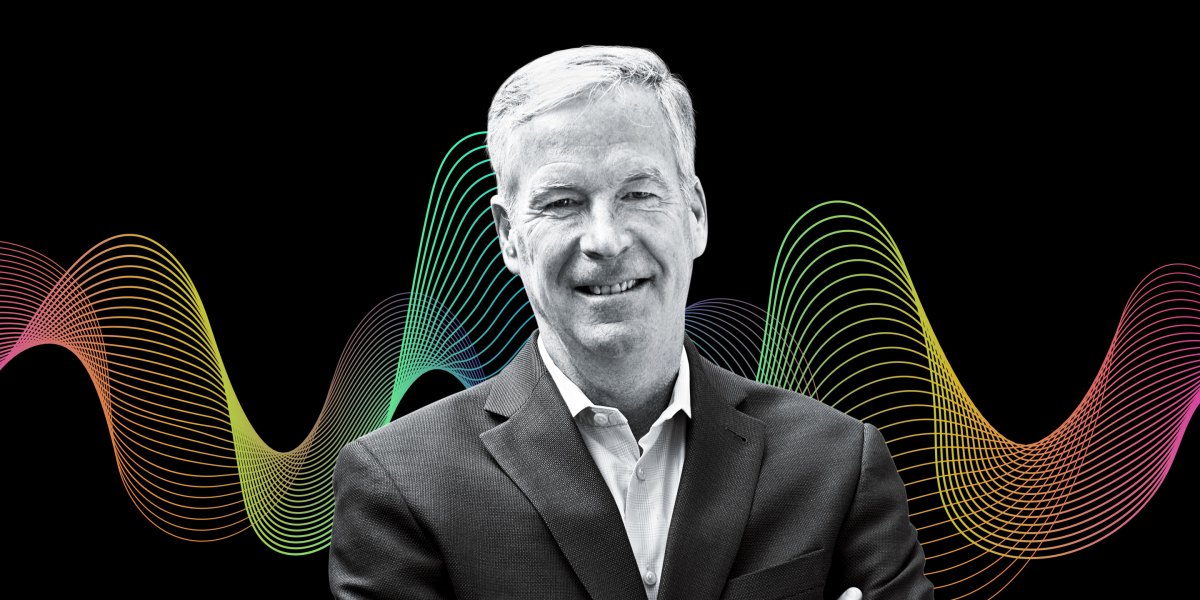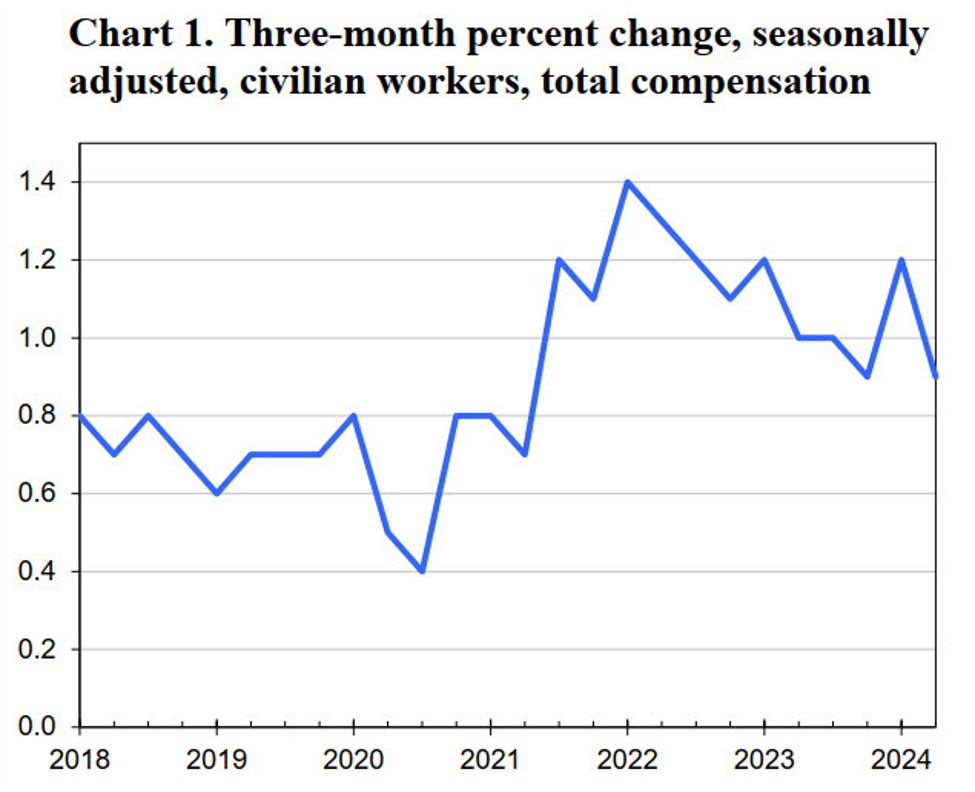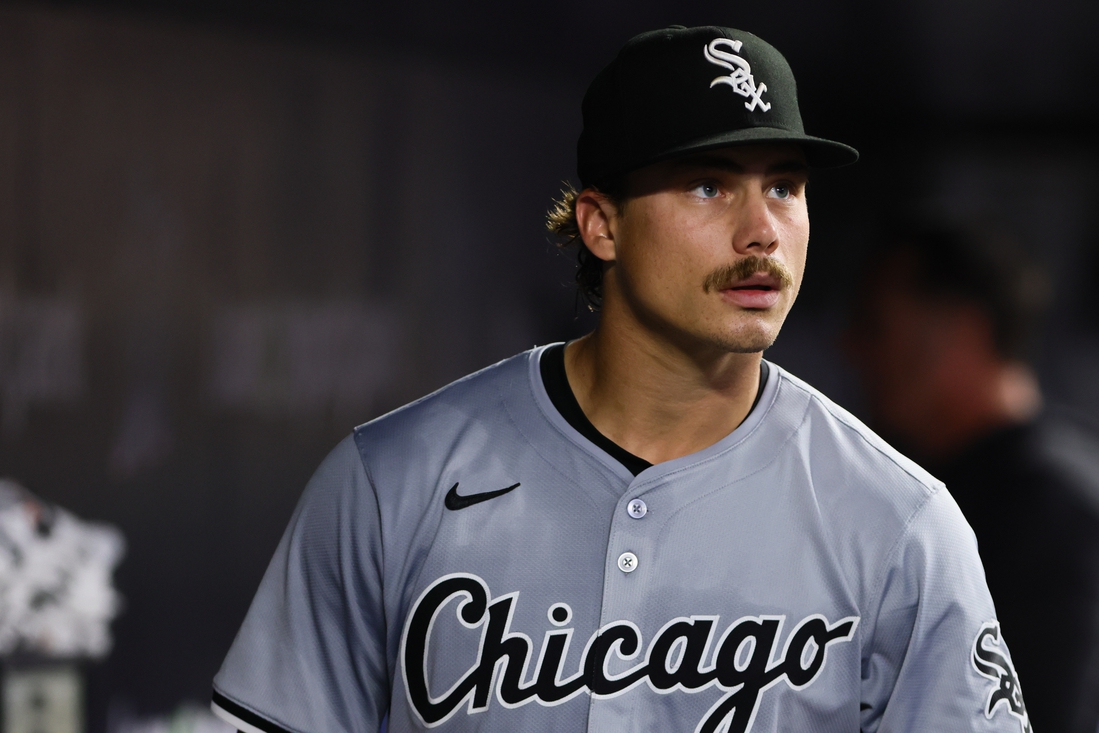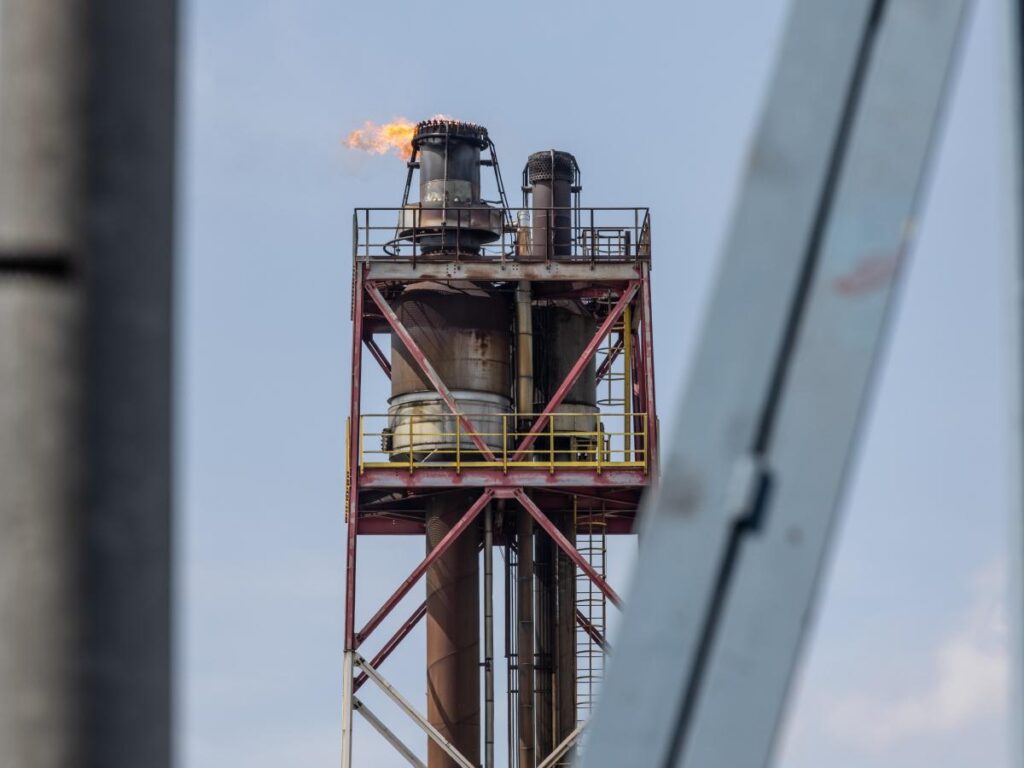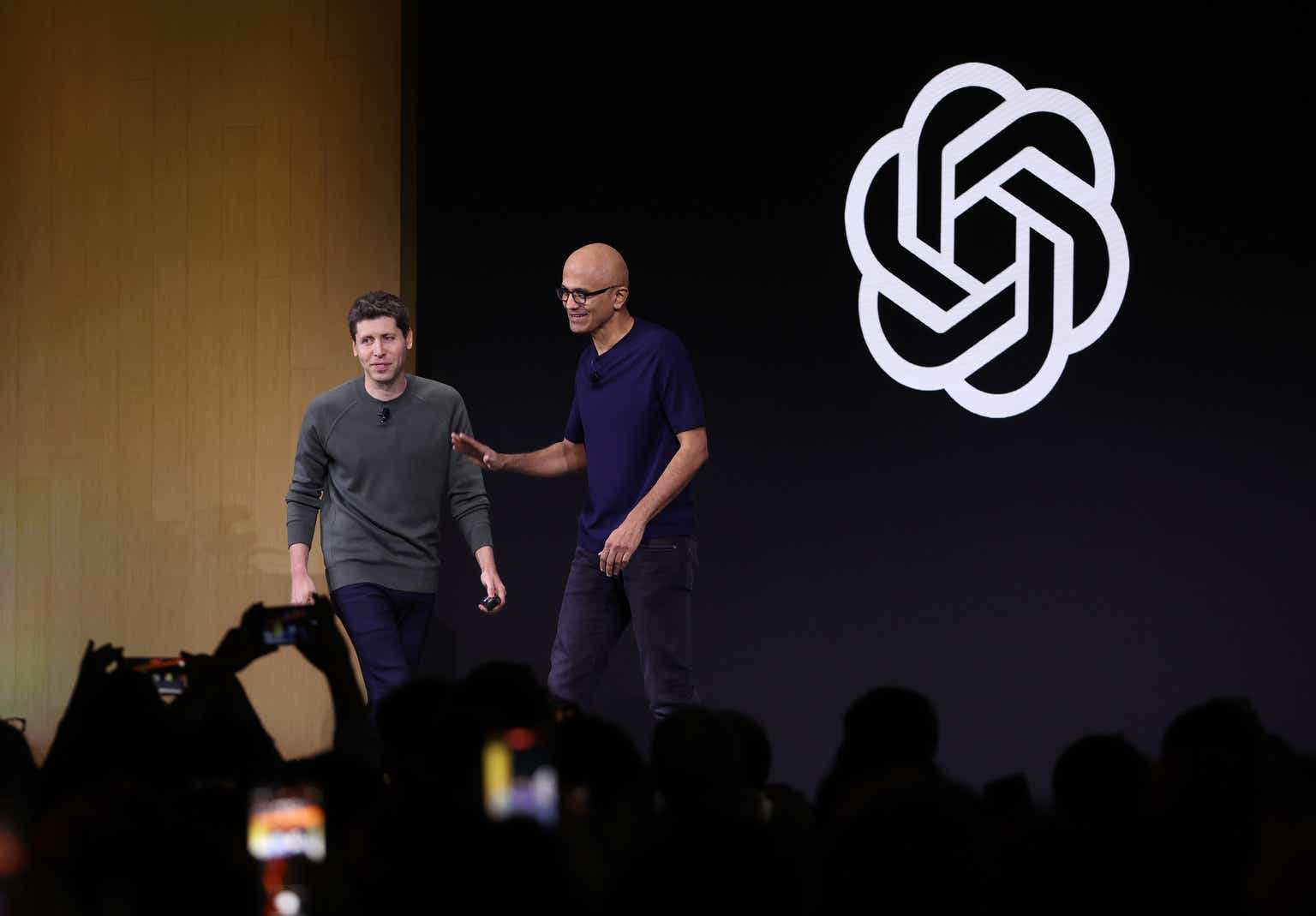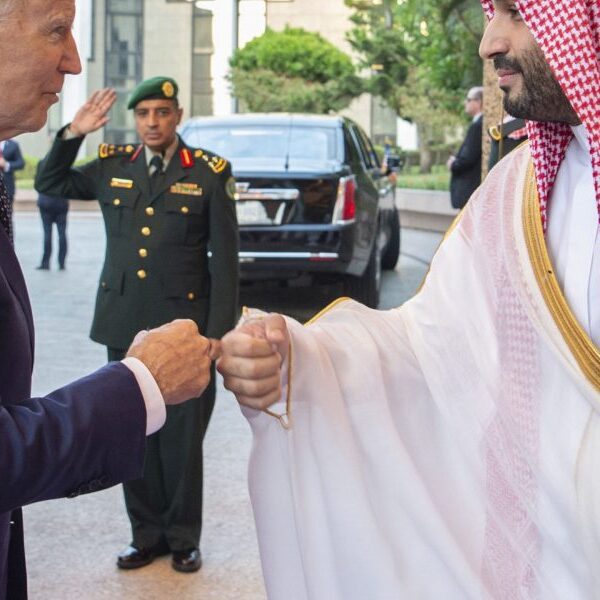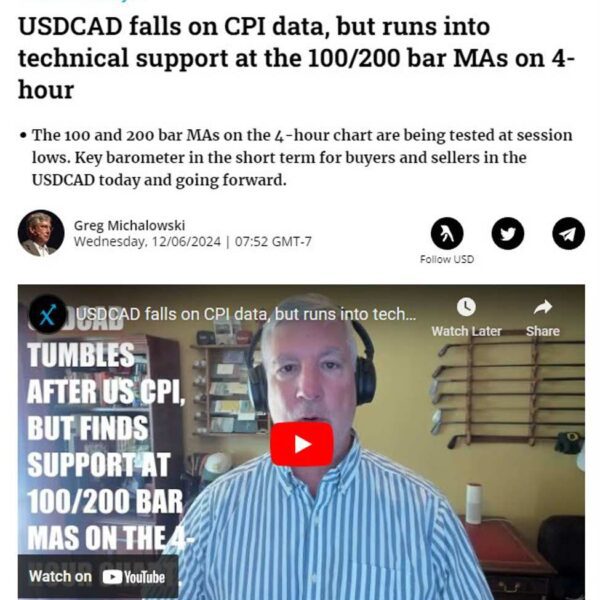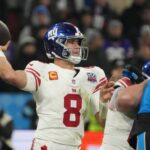

On this episode of Fortune’s Leadership Next podcast, host Diane Brady talks to Steve Cahillane, chairman, president, and CEO of Kellanova. They discuss the rebranding of Kellogg Co. to Kellanova following the spin-off of the North American cereal business, Cahillane’s career in consumer goods, and what’s top of mind for him right now for the company. They also talk about Jerry Seinfeld’s surprise of a movie about one of the company’s iconic brands, Pop-Tarts.
Also on the episode, Jason Girzadas, the CEO of Deloitte US, joins Brady to discuss the latest Fortune/Deloitte CEO Survey. “Seventy-three percent of CEOs surveyed said that they were either optimistic or very optimistic about their company’s prospects over the next year,” says Girzadas. “Nevertheless, there are significant disruptors and challenges afoot, and that was also evident in the survey results.”
Listen to the episode or read the transcript below.
Transcript
Diane Brady: Leadership Next is powered by the folks at Deloitte who, like me, are exploring the changing roles of business leadership and how CEOs are navigating this change.
Welcome to Leadership Next, the podcast about the changing rules of business leadership. I’m Diane Brady. This week I spoke with Steve Cahillane, the CEO of Kellanova. Now, you might not recognize that name because it’s new. Last fall, Kellogg Company split into two public entities, WK Kellogg, which is the North American cereal business, and Kellanova, which owns the international cereal division and snack brands like Pringles and Pop-Tarts. Yum.
Also in this episode, I speak with Jason Girzadas, the CEO of Deloitte US, which sponsors this podcast, about the Fortune/Deloitte CEO Survey results we received. The Fortune/Deloitte survey is shared with CEOs in the Fortune community to gauge how they’re feeling about various topics related to leadership in business like growth, industry performance, geopolitical instability, trust, environmental matters, and more. Interesting results from that survey and an interesting time to be gauging what leaders are thinking about the business landscape. And Jason joins me to discuss.
But first, without further ado, here’s my conversation with Steve Cahillane, chairman, president, and CEO of Kellanova.
[Interview begins.]
Hi, Steve. This time last year, you were the head of one of the world’s most iconic companies, Kellogg Company. Today, here you are, CEO of Kellanova. Of course, much has changed, much has not. Why don’t you walk us a bit through the decision in September of last year or before that, obviously, the split of this company.
Steve Cahillane: Yeah, Diane, great to be with you. I’d say probably one of the most challenging decisions I’ve had to make as a leader in business, but in many ways an easy decision because the industrial logic was so compelling to create Kellanova, was essentially spinning off the North American cereal business. And the moment we did that, Kellanova becomes a faster growing higher margin business and the Kellogg Company changes in an irreversible fashion.
Brady: Well, let’s just tell people a little bit about what exactly happened with the split. So there are now two independently traded companies. You’ve got Kellanova. And if I’m looking here, that includes Kellogg’s Frosties—this is sounding like my kitchen cabinet here—Special K, and of course, the snack business, Pringles, Cheez-It, Pop-Tarts, etc. And there’s also another company, WK Kellogg Company and that includes Kellogg’s, Rice Krispies, Raisin Bran. When you said it’s faster growing, why? Is it focus or why split up such a happy family?
Cahillane: Yeah, yeah, yeah. You know, Snap, Crackle, and Pop live in both houses. So it is a bit of a divided house.
Brady: That’s true. There’s international domestic. I think that’s fascinating in itself.
Cahillane: But it really is, it’s a lot simpler than sometimes people are aware because there’s this sense that we split the company in two. And essentially what we really did is we took the North American cereal business. So the brands that you outlined and we spun that business off to our shareowners and renamed it WK Kellogg Company. So Kellanova now is everything that’s left. It is the surviving company, if you like. It’s the RemainCo, in kind of business jargon, without North American cereal. So we have cereal outside the United States. We still have cereal outside of North America, I should say, because Canada went with WK Kellogg Co. But we’ve got the snacking business everywhere in the world, including Pringles, Cheez-It, Pop-Tarts, and so forth. And when I say it’s a faster growing company, the North American cereal business, many people thought was much larger than it was. It was about 2.7 billion, about a 15 and a half billion dollar company. But it’s been in a long-term decline. The cereal category in the United States has been declining, you know, a couple of points a year for the last 20 years.
Brady: Why is that, do you think?
Cahillane: People still love cereal and it’s a very highly penetrated category. But if you just think about the trajectory of the last 30 years, the choices that are available for people at breakfast have grown, and they’ve grown consistently from out of the home, on the go, QSR to in-home proteins and things of that nature. So it’s just a more competitive environment when you think about the breakfast occasion.
Brady: Since you were CEO, you joined in 2017, CEO of Kellogg Company, and no explanation needed. As you mentioned, one of the world’s, I think, most iconic, most recognized brands. When you were making this decision for Kellanova, can you walk us through that decision to brand…I think about Mondelēz and all the different companies that have done what you’ve done, they’ve split, they’ve renamed. Even how you came up with the name. Was it easy or was it quite an arduous journey?
Cahillane: It wasn’t easy. I spent a lot of time thinking about it myself. I consider myself a moderately creative person, and I couldn’t come up with a single good idea. And so we put it out to our people. We literally asked everybody in the company if they so choose to give us their ideas, and nobody came up with exactly Kellanova, but a lot of people came up with things very similar to it. Nova lived in many of the ideas and so we essentially put together a lot of the different employee ideas and we kept the iconic K of Mr. Kellogg’s company. We kept the first four letters, obviously K, E, double L, and then we started with a nova. So a new beginning, keeping what’s great about the history, heritage, values of our company, but then launching a new beginning. We wanted it to be recognizable to people so they’d look at it and say, I recognize that, but not entirely. So what is that? So inviting a conversation about what is Kellanova? It looks familiar to me, but can you explain it, please? It gives us our employees an opportunity to engage in exactly what this new business is.
Brady: So when did it become clear to you, Steve, that there was a need for this split?
Cahillane: We did a lot of work around our portfolio at the end of 2017 into 2018. That led to us spinning off our cookies and pie, cones, crusts, and fruit snack businesses that we purchased from Keebler. Many years ago. We kept the Cheez-It business, but we spun off the others during that time. We looked at the North American cereal business but decided that we would keep it. And then COVID hit, and obviously it led to a resurgence of cereal. But after COVID, when that started to settle down, we realized that the North American cereal business, to be successful, would need a lot more singular focus. So part of the spin off was not just creating Kellanova, a faster growing higher margin business, but giving the cereal business the opportunity to flourish by being a singularly focused company that just focused on that one occasion, mostly the breakfast occasion. But the versatility of cereal makes it an opportune time for snacking and other things. But we never prioritized it in the way that it will be prioritized and is prioritized with WK Kellogg.
Brady: It’s interesting. You, more than most leaders, understand the power of brand. I was thinking about your career and where you’ve worked, and give me a sense of the power of the brands that you currently are the custodian of in many ways and how you plan to expand on them. I’m thinking of Cheez-It, for example…I think Taco Bell, what was that, the Cheez-It Taco Bell Cheez-It crunch wrap, I think was one of the things I saw recently. How do you expand these brands? How do you think about them? Let’s start with the snack categories. Talk a little bit about the snacks and what you’re planning to do.
Cahillane: We do have just a treasure chest of brands and it’s what attracted me to this business at the very beginning. They had me at hello because of the power of the brands and my love of brands…Cheez-It is part of the cultural fabric of the United States. And yes, the Taco Bell promotion was extraordinarily successful. The idea that people could have a tostada with a giant Cheez-It just really delighted consumers, you know, all across the country. You think about Pringles and Mr. P, the differentiation of that brand. You have Mr. P, you have the can, you have the pop. Once you pop, you just can’t stop.
Brady: I had some Pringles last night, actually.
Cahillane: They’re fabulous, right? And think about Pop-Tarts, the cultural iconicity of Pop-Tarts. The Pop-Tarts bowl that we just did blew up the Internet with the edible mascot. This edible mascot that basically sacrificed himself to the winning team and was toasted at the end of the game. Again, billions of impressions because it was just so creative. So the idea that we have these brands is great, but we have to continue to be creative, to contemporarize them, to introduce them to the next generation of consumers. We’ve just got some incredible assets to work with there.
Brady: It’s interesting you mentioned Pop-Tarts. The Seinfeld movie that was done. Was that good for the brand? Did that give you a pop, so to speak?
Cahillane: It did. It was great for the brand. And I should have mentioned that after the Pop-Tarts bowl, because it was so exciting. I mean, how many brands does Jerry Seinfeld do a movie about? The answer is one, he’s only done…
Brady: Does he have to seek your permission. I guess obviously he does, right?
Cahillane: Very, very funny, Diane, that you would mention that. You would think that he should have and that he would have, but he did. You did not. And so he had a lot of fun in his stand-up routine talking about how he didn’t seek permission and he might end up in Pop-Tarts prison. When we found out he was doing it, we tried to get in contact. They kind of kept us at arm’s length, but it ended in a friendship. And I was actually out at the premiere with Jerry for the Pop-Tarts movie, and he actually did engage with us as the movie was launched. He did a two-minute commercial for us, poking fun at how he didn’t seek permission. And actually, we, the president of Pop-Tarts is in that short film stealing some of his prized assets, including the Soup Nazi.
Brady: Yes, that’s true. It’s not a serial killer slasher film. It’s a family movie. So I guess that certainly helps. But, you know, let me step back a bit to the 30,000-foot view. Steve, what got you into this business in the first place? Tell us a little bit about what you wanted to be when you grew up?
Cahillane: I grew up in New York, the son of a New York City fireman. So I spent, I think, the early years wanting to be a New York City fireman. My father and mother encouraged me that I could do other things and so I went off to college. And when I was deciding on my first job out of college, I was lucky to have choices. And the choices were very stark. One was an investment banking rotation in New York City, and the other was a job with the E. & J. Gallo Winery as a sales rep/merchandiser calling on grocery stories, building displays, cutting boxes, dusting shelves, all that type of stuff. When I went to New York City and did the visit there, it was all kind of glamour. This was 1987. So think Wall Street wearing a suit.
Brady: Greed is good Gordon Gekko time.
Cahillane: All that stuff. And then I went to the Los Angeles area and visited Gallo, and it was riding around in a station wagon with the sales rep calling on grocery store general managers. And the decision was really easy for me. I didn’t understand what an investment banker really did.
Brady: Do you now?
Cahillane: Now I know. I have great respect for it. But going into the grocery stores and calling on grocery managers, I could get that. I could understand how when I went in, the store would look a certain way, and if I did my job effectively, I would improve that store, I would improve my shelf positions, my coldbox positions. I put more cases on display. I would make that store better. It just resonated with me. And I’ve been in consumer goods ever since, and so I’ve been around some of the greatest brands, and it’s been a very rewarding career for me personally.
[Interstitial music.]
Brady: I’m here with Jason Girzadas, the CEO of Deloitte US. Jason, Deloitte is the longtime sponsor of this podcast. Also our collaborator on what’s now the thirteenth edition of the Fortune/Deloitte CEO Survey. Thanks for joining us.
Jason Girzadas: Well, thank you, Diane. It’s great to be with you. Looking forward to discussing the results of the latest survey.
Brady: And there’s a lot to discuss. This is a survey of CEOs from across the Fortune network. Tell me a little bit about some of the notable trends that echo what you’re hearing from CEOs.
Girzadas: Yes, of course. I think it is important to say that the survey was fielded in the June time frame of 2024. And so it is still, nevertheless, I think, an important barometer of CEO sentiment, which is really why we do this and I think is still indicative of where CEOs are in terms of their outlook. And to that point, our summer survey results indicate that CEOs, by and large, are still generally optimistic. Seventy-three percent of CEOs surveyed said that they were either optimistic or very optimistic about their company’s prospects over the next year. That is relatively consistent with what we’ve seen back in the winter of 2024 survey, which I think is interesting to note that we’ve seen some resiliency to the optimism. Nevertheless, there are significant disruptors and challenges afoot, and that was also evident in the survey results.
What I found interesting is that, continually, CEOs say that geopolitical instability is at the top of the list. But unlike the last survey, the impact of inflation has reemerged as the second most important potential disruptor, which is an increase that had dissipated or subsided on the list when we last surveyed in the February timeframe. And then also, I think it’s interesting to see that regulation remains a concern in the top three of potential disruptors as well. So the resilience seems strong with respect to overall optimism, and yet I think some very important disruptors and potential barriers are on the minds of CEOs.
Brady: Let’s drill down on that a bit. You mentioned the geopolitical instability, inflation, all the factors that, frankly, are beyond the control of a lot of leaders. What advice do you have?
Girzadas: I think this is a classic case where CEOs are having to prepare for a very wide array of potential outcomes. And so this is a classic case of scenario planning and contingency planning being as an essential ingredient for all executive leadership teams, taking a broad view of what the possible outcomes are and not being prescriptive about a single worldview or a single outlook, if you will. And so, as a result, I think preparedness means really working through a range of potential outcomes and ensuring that there is readiness across those various outcomes that are all plausible. I think it’s where we see concern and potential risk is if one gets fixated on a given outcome. I think the volatility, the instability of this environment calls for just a high degree of agility across executive preparedness, and that is a real hallmark of leadership in leading organizations these days.
Brady: You know, I was struck by this sustained high level of optimism among CEOs around their company’s performance. What do you make of that?
Girzadas: Well, I think it’s indicative of even my own experience as a CEO, whereby you have confidence in your own team, you have a sense of bullishness and optimism about how your team will evolve and adjust and adapt, if you will, to the changes afoot. And I think their confidence in their teams probably also underlies their knowledge of their own organization’s preparedness, which I think is a good sign. I think in general, though, that there is a need to make sure that one is challenging those assumptions and not being too confident or overly confident. And it’s interesting they expressed the most optimism for their own company, they’re less optimistic about their industry, and even less optimistic about the global economy. So there is, I suppose, some preference or a bias towards their own knowledge of their own organization, which is probably understandable from a CEO’s perspective.
Brady: The mark of a confident leader, of course, I think. You mentioned teams, organizations. Curious, how are business leaders preparing their organizations and teams really to navigate the rest of this year?
Girzadas: Yeah, I think the hallmark of planning in this case is really just contingencies across all dimensions of the organization. Contingency planning with the boards of directors in terms of governance and bringing governance bodies along. Also looking across the organizational landscape, it’s both from a workforce perspective, from a technology readiness perspective, obviously from different lines of business perspective. So when we talk about scenario planning, when we see risk management contingency planning, it’s done holistically. It’s done in terms of the whole of team. It’s not narrowly defined in terms of only a subset of an executive group.
I think leading teams are doing this holistically, doing it with an eye towards multiple potential outcomes that are all plausible. And then factoring that into their planning impacts potential milestones with respect to new releases of products or new market entry strategies also impacts internal initiatives of all sorts in terms of capital investment and other potential technology changes and the like. So it is a broad-based approach to readiness and contingency planning that I think is warranted.
And I also think that this is a case where overall we see organizations also taking a hard look at their cost leadership as a way to mitigate and provide some insulation or resiliency to the potential outcomes. Cost leadership is a way to be prepared for whatever outcome exists and I think drives competitive advantage no matter what. And so those are some of the things that I think we would advise and see organizations endeavoring to do given the high volatility and uncertainty of this landscape.
Brady: So it sounds like the increased confidence in their company’s ability to navigate these challenges is justified.
Girzadas: I think so. And also, importantly, preparing organizations for this new level of potential disruption. We often talk about this volatility and uncertainty as the new normal. And I think I see and it’s understandable that CEOs are having to prepare their organizations, their leadership teams, certainly, but also the broader organization for accepting this new normal of change and disruption, and that’s not easy. I think it causes organizational fatigue. It causes real strain on leadership teams to be constantly evaluating their outlook and preparing for different eventual outcomes. But that’s what’s necessary. And so how do you create an energetic and resilient workforce and organizational culture that prepares for and sort of accepts this level of disruption as the new normal? That’s really the challenge that I see certainly in my own day-to-day CEO work, but I see with our clients and others that we have the privilege of working with.
Brady: Great challenges and also great opportunities. Thanks for your insights, Jason. Of course, thanks for sponsoring Leadership Next.
Girzadas: Well, thank you, Diane.
[Interstitial music.]
Brady: When you think about where we are with trends, let’s just even start with some of the consumer trends. I know you’re not oblivious to it, I see it on the packaging of your cereal and such…how do you see the consumer tastes changing and how are you adapting to that?
Cahillane: I think consumers for a long time now have been growing more and more sophisticated. They’re sophisticated in many ways. What’s in the product? How is it made? The ethics of a company, the sustainability of a company? But the one thing that they’ve always demanded is not compromising on taste. And so you have to have a brilliant product for your consumers each and every day. You have to delight them every occasion that you’re invited into their kitchen or onto their snacking table, and so remembering that is always most important. And then you have to keep your brands fresh, contemporary, interesting, and lively. People want to relate to brands. Brands still matter, but brands have to be invested in and they have to understand the needs of their consumer, what their consumers care about, and they have to delight them again with the product, but also with the entirety of the experience. As a brand marketer, you can’t ever forget that.
Brady: Talk a little bit about what keeps you up at night, maybe nothing, that’s always a bit weird to phrase it that way because keeping you up at night would imply you’re not dealing with it. But let’s talk about the priorities you think about. Obviously, inflation. You know, a lot of people think about the supply chain. We certainly have to think about what consumer tastes and diet, etc.. But when you think about the biggest changes facing your industry, what would they be?
Cahillane: I think it’s all of those and it’s the pace of change. Three years ago, we never saw a pandemic coming. Nobody did. And all of a sudden we’re knee deep in it. And that led to all sorts of knock-on effects, including supply chain bottlenecks, shortages, soaring commodity costs, having to take pricing that we’ve never taken for the past 40 or 50 years. And so thinking about the future, we have to prepare for the unexpected and we have to be a more versatile business than we’ve ever been before. Not just us, but the entire industry, because we don’t know what that next big change is but we know we have to be ready for it.
Brady: Well, one of the big changes, of course, is climate change, and that’s impacting the food supply. How does that change the calculus of what you do or what you make?
Cahillane: So we have to have redundant supply and it’s because of climate change and it’s because of geopolitics. You see what’s happening in the Red Sea. Obviously, the Russian invasion of Ukraine, that led to all sorts of wheat shortages and having to get things from different places. So having a redundancy of supply has never been more important and having, again, versatility in the way you make product and where you make it and how you ship it has never been more important because the stability that we’ve enjoyed for many years and the just-in-time inventory and all those types of things have really changed, I think permanently. And so that versatility in your supply chain has never been more important.
Brady: So now you are here, here you are, Kellanova. Obviously the portfolio that you’re overseeing is different with the spinoff. Where are you investing most of your time right now? Give us a sense as to what’s on the horizon that you can tell us about it.
Cahillane: So we’re investing and I’m investing a lot of my time in our people and the people who make our product and the people who distribute and sell our product. And that’s here in the United States. But it’s increasingly outside the United States. Fifty percent of our business is outside the United States. I just came back from Thailand. We’re building a huge Pringles facility in Thailand. I followed that up with a visit down to Mexico where we’re building a huge Pringles factory in Mexico, not for the United States business, but for the northern Latin American business.
Brady: The flavors are wild when you get outside the U.S. I used to live in Asia and Africa and flavors you didn’t even know existed. And they’re quite delicious when you put them on a chip.
Cahillane: I mean, whoever thought seaweed would be a popular Pringles flavor, but it sells like hotcakes in Asia. That’s a big opportunity for us. We’re also launching Cheez-It outside North America. We launched in Latin America last year. We’re launching in Europe in the fall. So I spent a good bit of time with our customers out there. So thinking about our brands and how they travel outside the United States is an increasing focus for me.
Brady: Do you have advice? You know, when you think about yourself with that choice between investment banking and going into the grocery aisle, so to speak, what advice do you have for the next group of people who are coming out of school right now at this juncture? Where do you see some of the greatest opportunities?
Cahillane: What I try and tell people is don’t just always follow the masses. I mean, everybody’s very interested in tech for a host of very good reasons. And if you’re passionate about technology and artificial intelligence and the next generation, then you ought to pursue that with all the passion that you have. But if you’re interested in brands, if you’re interested in cars, if you’re interested in retail, you ought to pursue that because it it’s an old axiom. But I mean, find what you love and you’ll never work a day in your life. I’ve lived through that. You know, I’ve lived by that. And I think it’s really important. So don’t force it. And if you’re not happy with what you’re doing, you know, don’t be afraid to think about doing something else. Because again, you’re going to be better at something that you like to do. It sounds so simple, but I see people all the time pursuing something because they think that’s what they ought to be doing because other people are doing it. Don’t just follow the herd.
Brady: I think it’s almost remarkable that we’ve gotten through a conversation and not mentioned AI. Is that a bit overhyped at the moment?
Cahillane: You know, I don’t think it is, Diane. I think it’s hyped quite a lot. And a lot of what you read is maybe misguided, but that’s because we just don’t understand the potential of what’s coming. And what’s coming, I think, is quite dramatic. I think it is the next iPhone. I think it is the next real breakthrough in technology. What exactly it means and how disruptive it will be and where it disrupts, I think, remains to be seen. But each week that goes by, we’re learning more about exactly how we may utilize it and where that disruption might, in fact, occur. But I think it’s, I do think it’s a very big deal.
Brady: Is it disrupting much of what you do right now at Kellanova?
Cahillane: I wouldn’t say it’s disrupting yet, but it is introducing a lot of productivity areas for us. Some simple things that would take tens of hours of people’s time to accumulate data on our competitors, on what’s happening in the marketplace, can be done with a first draft in seconds. And it still requires an editor, somebody who knows what they’re doing to look and say, is this plausible? Is this good information? But it saves a tremendous amount of time kind of on that front end, so I think about it as a first draft in so many ways in our business. And that’s going to require that people scale up in different areas like editing and being able to be that prompt engineer that gets the most out of the technology.
Brady: But let’s cycle back to Kellanova. Anything you want to say about the particular products you’re looking at and what’s most exciting to you in terms of where the opportunities are geographically, product-wise, or anything else?
Cahillane: For brands, the most important thing that a brand can deliver to consumers is differentiation. You know, why am I spending more for this brand? And I mentioned already the quality of the product is going to be exceptional. But once you have that, what else differentiates your product? And so if you think about Pringles, I already mentioned the can, Mr. P, the very shape of the chip. There’s so much that Pringles owns that is differentiated in consumers’ minds. And then what we think about traveling overseas with that product. What Pringles does so exceptionally well is carry different flavors. And so we’ve mentioned about the flavors in Asia, but, you know, flavors are very, very local. So the very fact that we can make Pringles in hundreds of different flavors automatically introduces the brand to different cultures around the world. That’s what we’re doing with Cheez-It just now. As we launch Cheez-It in Europe, we’re introducing a whole different set of flavors because cheese is a very local and passionate thing for consumers. The way the French think, the French think of cheese, I promise you, is very different than the way Americans…
Brady: Love French cheese. Is it Gruyere? I know, that would be Swiss, right? But can you give me a sense as to if I go to France and I buy a box of Cheez-Its, how it’s going to taste or look different?
Cahillane: It’s probably a bad example because we’re not launching in France yet. We are launching in the U.K. and parmesan and ricotta are things that we’re exploring. We’re still in the exploration phases, but we’ll have three or four flavors ready to go in the fall, and they’ll be unavailable in the United States. So as you travel around the world, you’ll see Pringles flavors that are completely different and that will be the same with Cheez-It as we launch later this year.
Brady: I foresee a travel business, the great Cheez-It tour, the great Pringle tours. Much more to come. Steve, thank you so much for joining us.
Cahillane: Great. Thanks for having me, Diane.
Brady: Leadership Next is edited by Nicole Vergalla. Our audio engineer is Natasha Ortiz. Our executive producer is Chris Joslin. Our producer is Mason Cohn. Our theme is by Jason Snell. Leadership Next is a production of Fortune Media
Leadership Next episodes are produced by Fortune‘s editorial team. The views and opinions expressed by podcast speakers and guests are solely their own and do not reflect the opinions of Deloitte or its personnel. Nor does Deloitte advocate or endorse any individuals or entities featured on the episodes.

